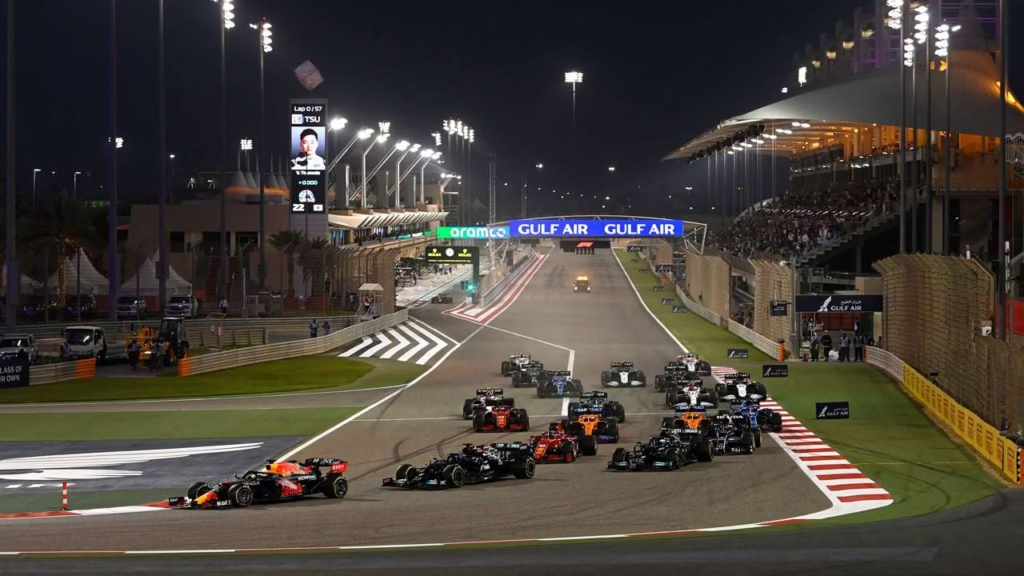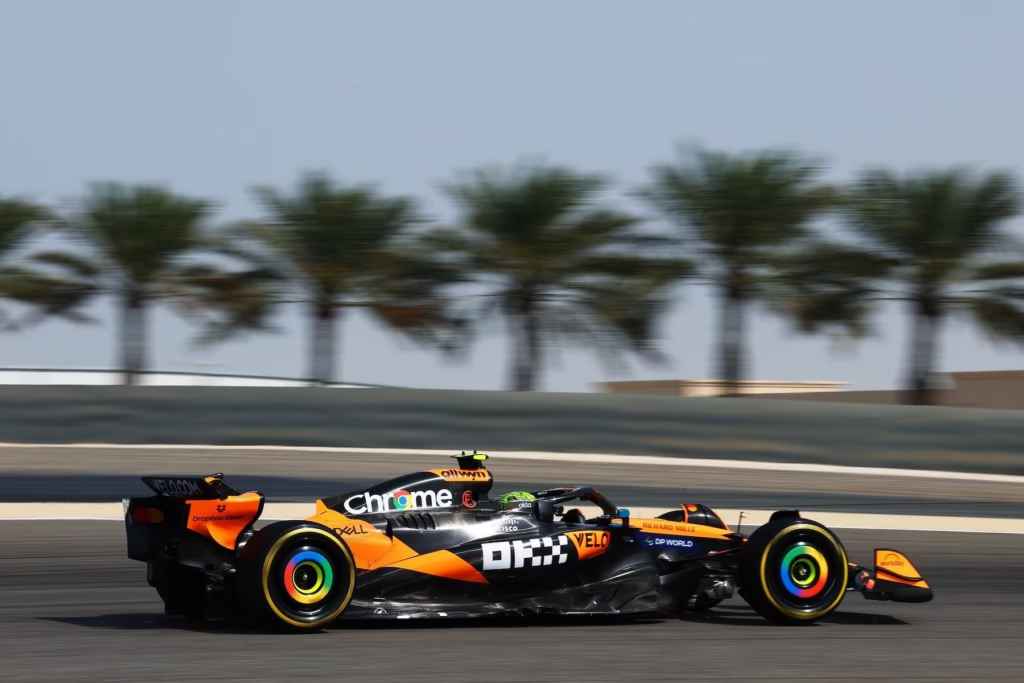The Bahrain Grand Prix, held at the Bahrain International Circuit, marked a milestone in Formula 1 history as the first race hosted in the Middle East. Known for its challenging desert setting and demanding layout, the circuit has since become a key fixture in the F1 calendar. This Bahrain Circuit analysis delves into the elements that make the track a technical testbed for engineers and drivers, focusing on the strategic decisions required to succeed in Sakhir.
History and Design of the Bahrain Circuit
Inaugurated in 2004 and designed by renowned architect Hermann Tilke, the Bahrain International Circuit was the first Formula 1 venue in the Middle East. Its construction, completed in just 16 months with an approximate investment of $150 million, transformed the Sakhir desert into a world-class motorsport facility. This circuit represented a significant expansion for F1, bringing the sport to a new region with a growing fanbase.
Spanning 5.412 km with 15 corners (9 right and 6 left), the layout blends long straights with technical and winding sections. The circuit is known for its “stop-and-go” nature, demanding both top speed on the straights and precise braking and good traction in the slower corners. Its highly abrasive surface, combined with the often-experienced high desert temperatures, makes it a consistent reference point for Bahrain Circuit technical analysis and race engineering.
Technical Specifications
- Circuit Length: 5.412 km
- Number of Corners: 15 (9 right, 6 left)
- Race Distance: 308.238 km (57 laps)
- Driving Direction: Clockwise
- DRS Zones: 3
- Track Type: Stop-and-go
- Surface: Highly abrasive

Track Analysis and Key Points
The design of the Bahrain International Circuit presents a series of key points that are crucial for race strategies and overtaking opportunities.
Turn 1: Critical Overtaking Point: Following a main straight over 1 km in length, Turn 1 is a tight right-hand hairpin where speeds drop dramatically from over 320 km/h to around 80 km/h. It’s a prime overtaking spot, especially during the opening laps, and generates high G-forces under braking. A good exit from the straight and precise braking are essential for gaining or maintaining position.
Middle Sector: High-Speed Direction Changes: From Turns 5 to 10, the middle sector features fast, flowing corners with complex changes of direction. Car stability and driver precision are vital here, as this section sets up important overtaking opportunities on the subsequent straights. Maintaining rhythm and the correct racing line in this sector is fundamental for a good lap time.
Long Straights and DRS Zones: Bahrain offers multiple overtaking opportunities thanks to its three strategically placed DRS zones along the circuit’s longer straights. These straights allow cars to reduce aerodynamic drag to gain speed and facilitate passes into the following braking zones. Rear wing management and slipstream utilization are crucial in these areas.
Key Braking Points: The most significant braking points are located at the end of the longest straights, especially before Turn 1 and Turn 10. Braking precision is essential to avoid losing time and maintain the ideal racing line, considering the high speeds reached beforehand.
Winding Sector: The second sector of the circuit features a slower and more winding section, demanding precision and good mechanical grip from the car. The driver’s ability to maintain speed through these medium-speed corners is decisive for lap time and for avoiding errors that could compromise the race.
Technical Aspects and Race Strategies
The Bahrain International Circuit, with its often sandy surface and the high temperatures characteristic of the season opener, presents unique technical challenges. Car setup must strike a delicate balance between low aerodynamic downforce to maximize straight-line speed and sufficient mechanical grip for good traction out of the slow corners.
Tire wear is a crucial factor in Bahrain. The constant braking and acceleration on the straights, along with the lateral forces in the corners, cause significant degradation. Teams must carefully analyze telemetry data and tire behavior during practice sessions to optimize their race strategy, which often includes multiple pit stops. Choosing the right tire compounds for the different phases of the race is fundamental.
Race strategies in Bahrain are heavily influenced by the overtaking opportunities on the straights thanks to DRS and the need to manage tires under the changing track conditions, especially if the race extends into the night when temperatures can drop slightly. The timing of pit stops and race pace management are key elements for achieving a good result.
Key Points about the Bahrain International Circuit
- Modern circuit with a blend of technical corners and straights for overtaking, hosting the exciting season opener.
- Necessity for a balance in car setup to perform optimally in the different sections of the track.
- Significant overtaking opportunities on the straights thanks to the three DRS zones.
- The transition from daylight to nighttime influences track conditions and visibility, adding a layer of complexity to technical and strategic analysis.
The Bahrain International Circuit continues to be an exciting and challenging venue on the Formula 1 calendar, marking the start of each season with its unique blend of speed, technicality, and the spectacle of night racing in the Sakhir desert.



















